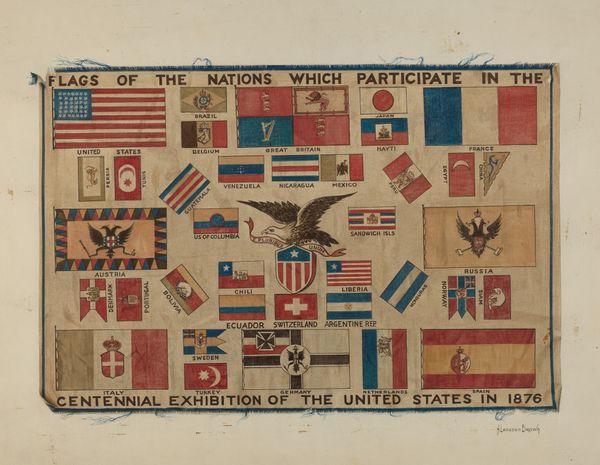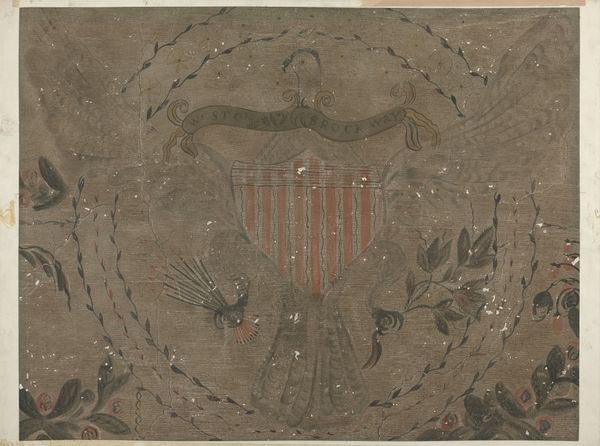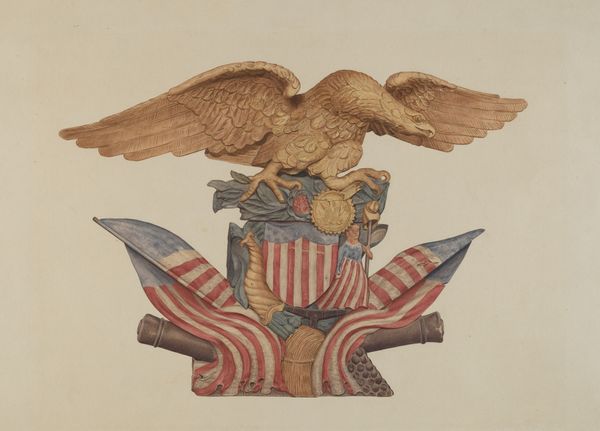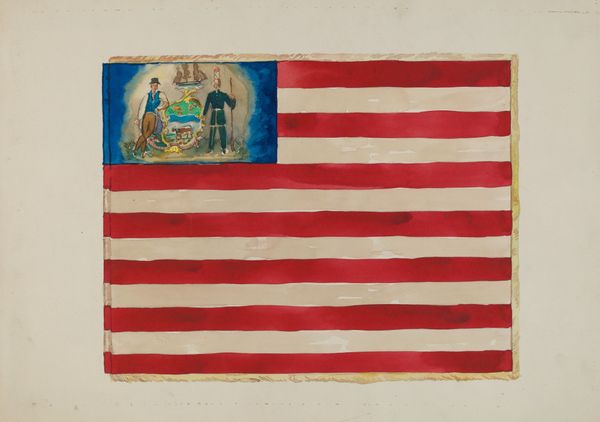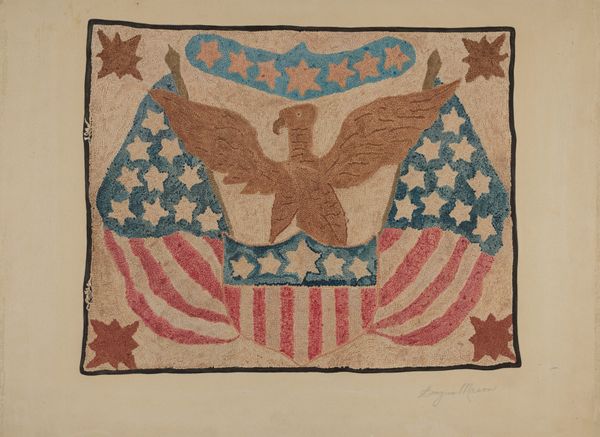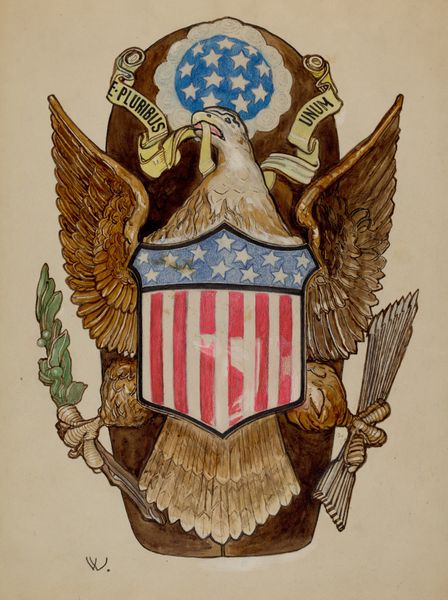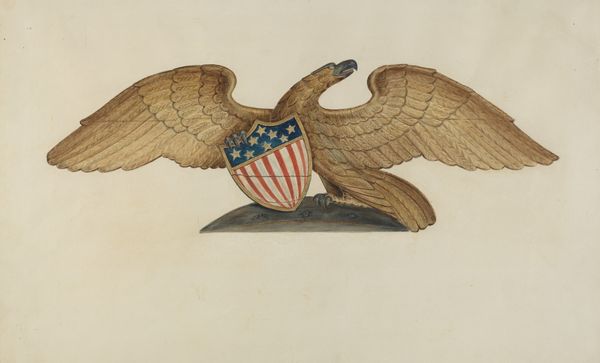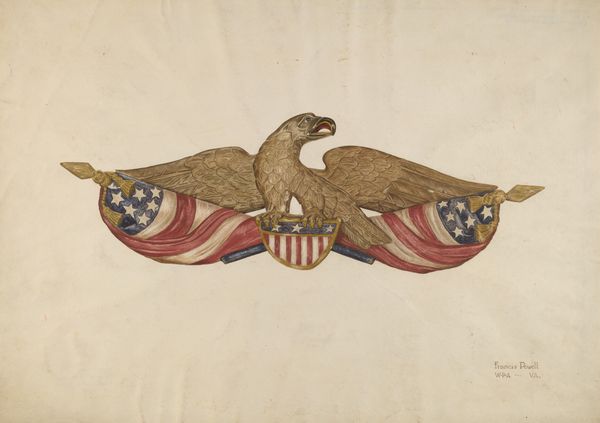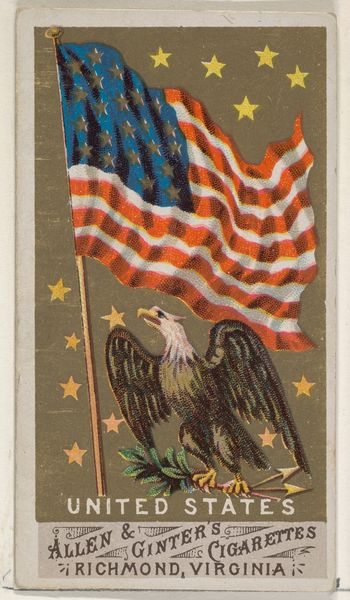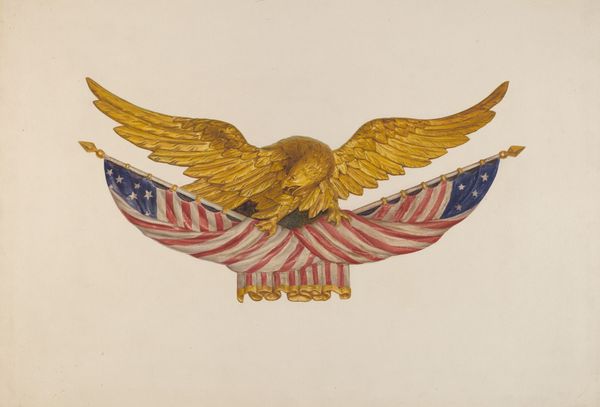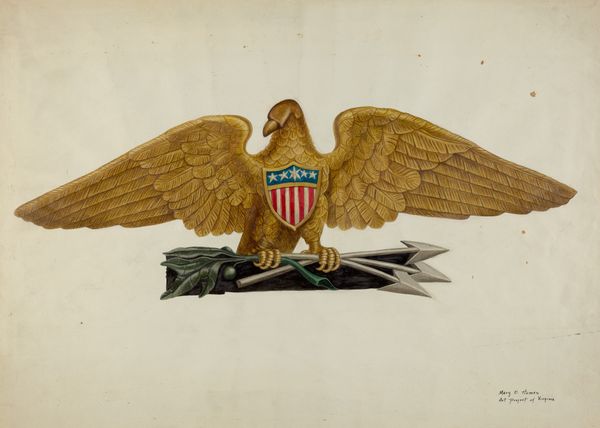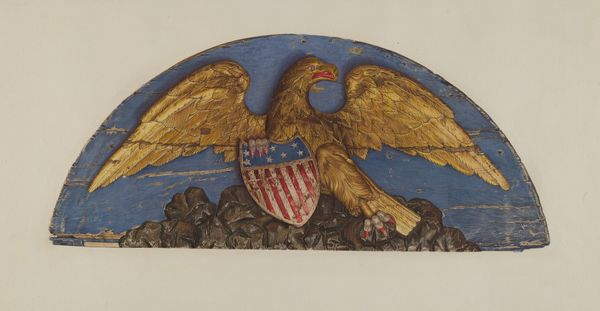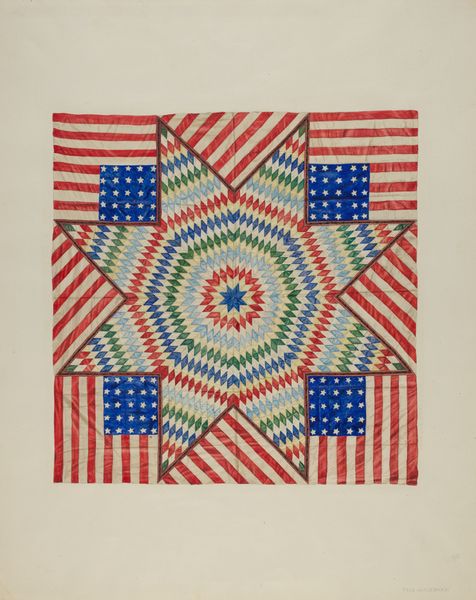
#
pattern heavy
#
natural stone pattern
#
geometric pattern
#
ethnic pattern
#
geometric
#
repetition of pattern
#
vertical pattern
#
pattern repetition
#
textile design
#
decorative-art
#
imprinted textile
#
layered pattern
Dimensions: overall: 51.2 x 66.2 cm (20 3/16 x 26 1/16 in.)
Copyright: National Gallery of Art: CC0 1.0
Curator: Editor: Here we have *Textile (State Emblems)*, created around 1937, the medium includes mixed-media and textile. I’m really drawn to the density of the pattern, it feels very patriotic but also a bit overwhelming. What stands out to you when you look at this textile design? Curator: I see a deliberate engagement with mass production and accessible imagery. The use of state emblems and patriotic symbols, repeatedly printed, points to the democratization of art through textiles. It makes me consider the labour involved in producing this design. Was it intended for everyday use? Who was the target consumer? Editor: That's interesting, I hadn't thought about it in terms of production. So, by focusing on the materials and how it was made, you're suggesting we can understand its original purpose better? Curator: Precisely. This isn't high art displayed in a gallery. The very nature of textile suggests utility, and the choice of emblems speaks to a potential market within the US. Consider how the industrialization of textile production during that period made such widespread distribution possible, reaching more consumers. It's about art entering everyday life. Where might it have been used, do you think? Editor: Maybe as fabric for curtains or upholstery? Something relatively accessible given the imagery and time period. Does focusing on the social context help us to move past whether we 'like' it or not, towards a different form of art appreciation? Curator: Absolutely. By investigating its materiality, process, and cultural context, we can appreciate its place within a larger social and economic framework. This piece urges us to reflect on the intersection of art, industry, and consumption in interwar America. Editor: That perspective really shifts how I see this piece! It is not just a pretty pattern. Thanks.
Comments
No comments
Be the first to comment and join the conversation on the ultimate creative platform.
